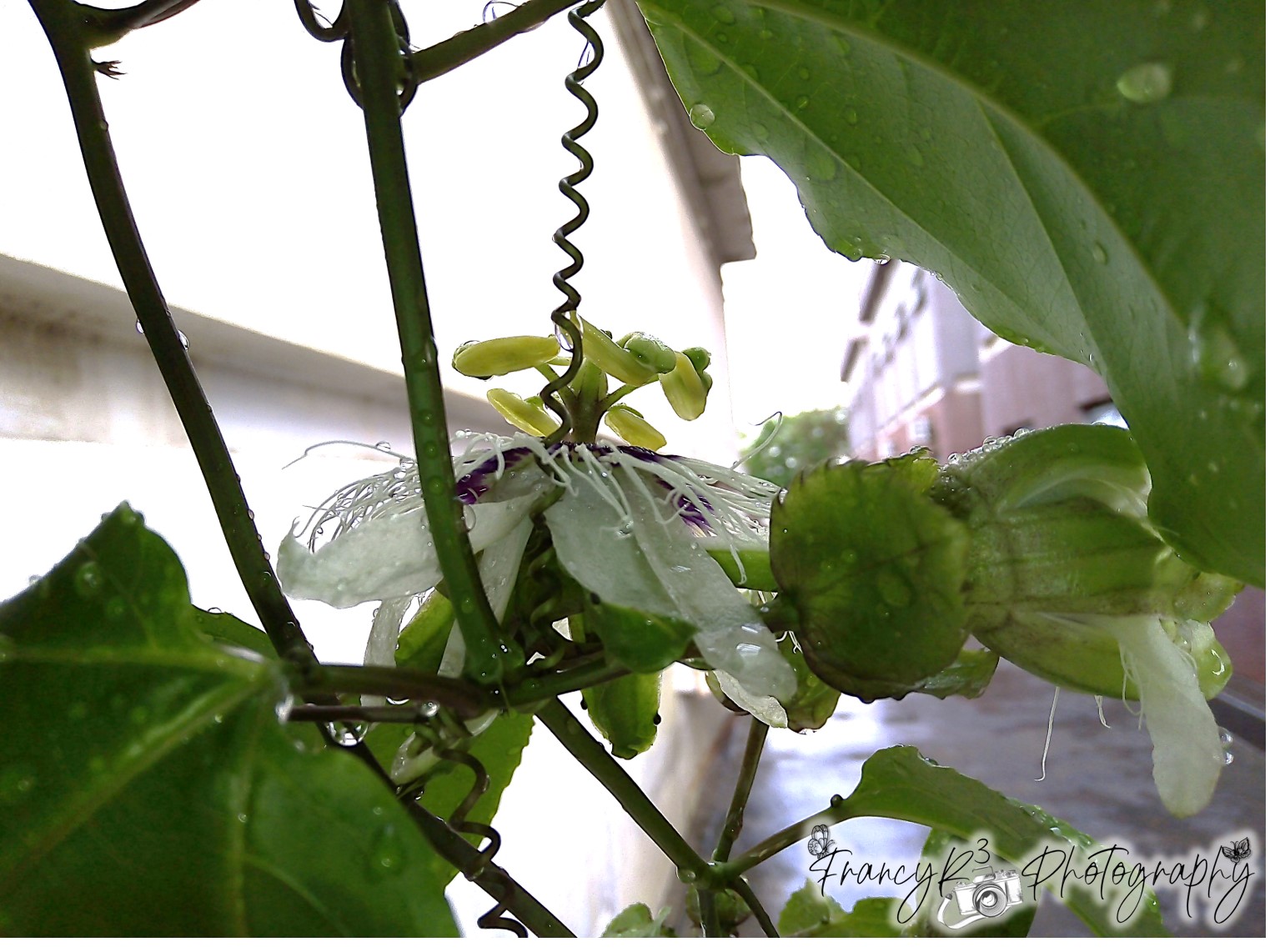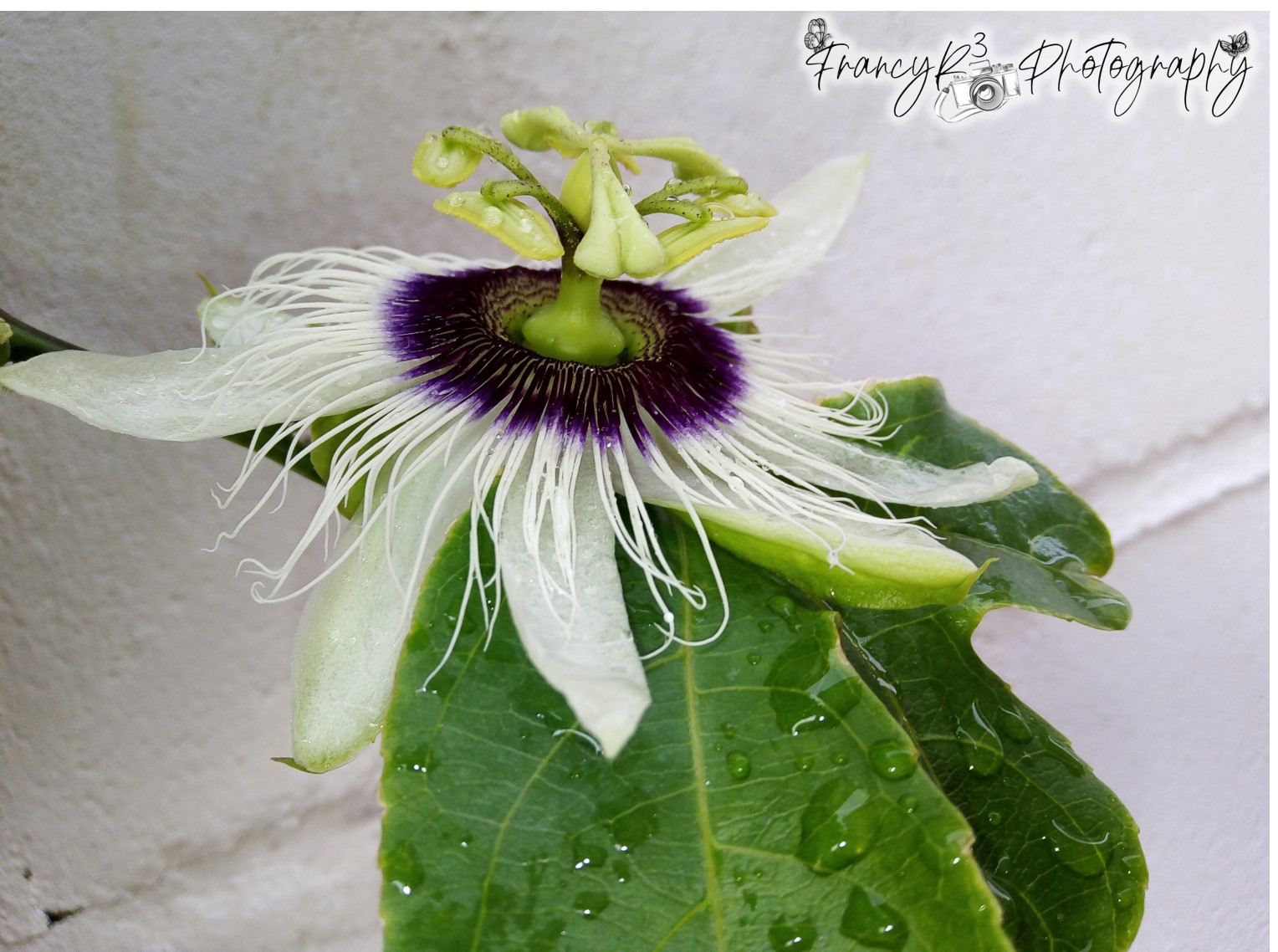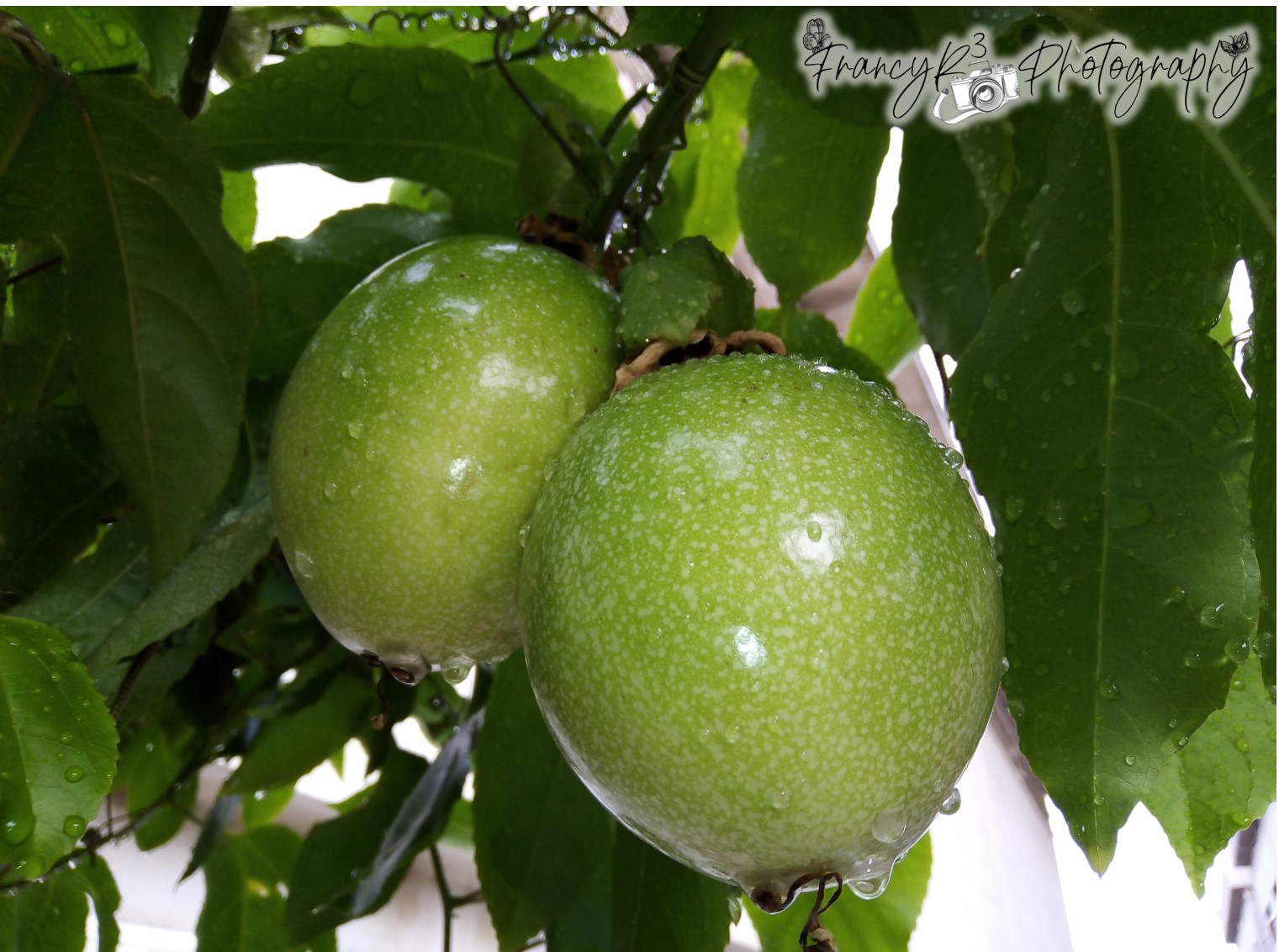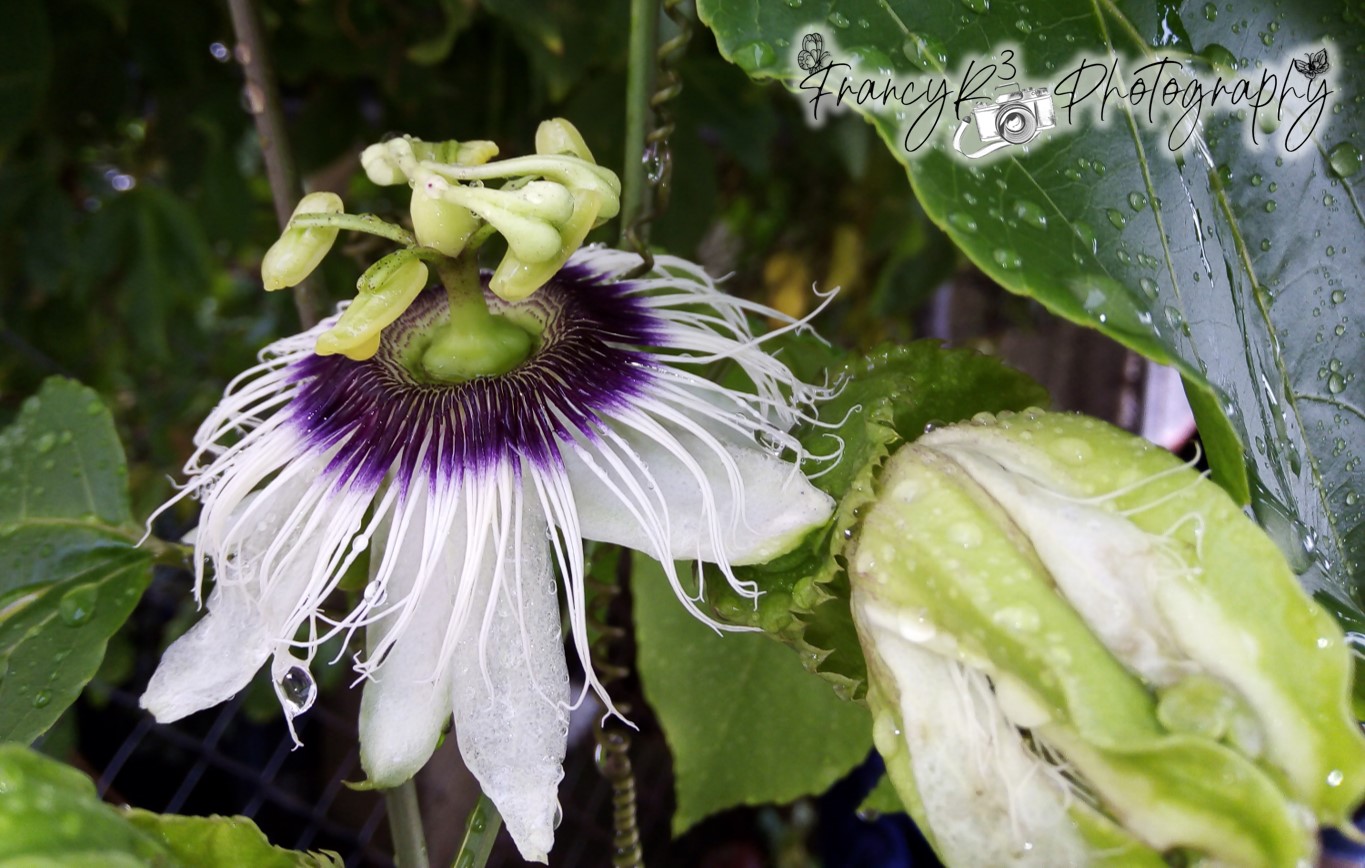Welcome Dear Photography Lovers
Bienvenidos Queridos Amantes de la Fotografía
Greetings dear friends who love the wonders that our mother nature gives us every day, today I have the pleasure to bring you images of a very popular fruit plant in my country. I even understand, from what I could investigate, that Venezuela is the second largest producer of this fruit worldwide. This fruit I am talking about, is nothing more than the parchita, well, surely, you will know it as Maracuya or Passion Fruit, which are perhaps its most popular names.


The 3 names I have just mentioned are not the only ones by which this worldwide known and delicious fruit, native to the Amazonian regions of South America, is known. Depending on the region or country, the popular name of this fruit may vary, here are some of the names by which it is known, Pasionaria, Calala, Mburucuyá, Parcha, Chinola, Guate, Granadilla, Passiflore, Barbadine, among others.



Now, this vine type plant, which I specifically show you in the images, is identified in the botanical world as Passiflora edulis f. flavicarpa, and is one of the varieties belonging to the genus Passiflora. This is the genus with the largest number of species, of the 22 genera that make up the Passifloraceae family.



It is characterized for being a perennial and climbing plant, with a life cycle that can reach 10 years. In general, it has a vigorous and robust appearance, reaching up to 10 meters in length. Its stem is woody, rigid and cylindrical in shape. While still young, it has a light green color and smooth texture; however, as it ages, it becomes darker in color, turning brown.



Its large evergreen leaves are very showy, have a beautiful dark green color and a smooth texture. They develop around the stem alternately, being compound leaves, they have a very interesting appearance, they are divided into three lobes, and when I saw them, they always reminded me of dinosaur footprints, hahaha. Excuse the comparison, but I grew up seeing parchitas plants, my dad always planted them in our house, so we always enjoyed their delicious juice.



Something curious about passion fruit leaves is that some plants, unlike what commonly happens, when they are young, they can develop simple leaves, that is to say, they do not have divisions. But there comes a time when they simply start to grow trilobed or compound leaves. From what I researched, this phenomenon is known as heterophily, which implies the presence of leaves of different types on the same stem.



Let's continue with its roots, these are usually superficial, with many ramifications, something that is very common in climbing plants, in addition, its development is very fast. Something that is also typical of climbing plants, is the development of what is known as tendrils. Which are a kind of springs that can reach up to 40 cm long, and with which it is used to go clinging and manage to climb.



Its flowers are very striking for their fragrance and exotic beauty, they are hermaphrodite and can measure about 5 cm in diameter. As you can see in the images, at the base of the flower are the petals of soft color. On the petals are arranged a kind of filaments that resemble beards, these are deep purple in the center and white towards the ends. From the center emerge the curious stamens, whose shape and arrangement give it the appearance of a crown.



As for the fruits, they are a type of berries and it should be emphasized that these come to be the main reason for their popularity in almost every corner of our beautiful planet. They are shaped like spheres, with a smooth textured rind and bright green color, while they are green. As the fruits ripen, their color turns yellowish, until they become completely yellow when they reach maturity.



Finally, I am sure that most of you are already aware of the variety of uses that can be given to the pulp extracted from the popular passion fruit. For example, it can be eaten raw directly from the fruit, or we can blend it and prepare juices or cocktails, as well as make delicious cold desserts such as mousses. If we process and cook the pulp, we can prepare jam or syrup, even, its peculiar sweet and sour flavor, gives it the versatility to be used to prepare delicious sauces, with which we can accompany savory dishes. Now, a really interesting fact that I discovered and want to share with you, is that if you are going to use it for the preparation of jams or mousses, do not discard the seeds. They contain pectin, which helps to generate a gelatinous consistency, ideal for such preparations.

Amazing Nature Contest: FREE TOPIC - #4/2/23. Mis mejores deseos bienestar y salud para todos, Dios los bendiga. Hasta la Próxima.Bueno, queridos lectores y amantes de la naturaleza, solo me queda despedirme, esperando que las imágenes e información que les comparto sobre este curioso árbol haya sido de su agrado. Muy especialmente, espero les guste a @bucipuci, @adalger y todo el equipo de trabajo de @dna y @amazingnature, ya que, es mi entrada para el concurso de esta semana, en el cual, si quieren participar, pueden acceder dando clip, al siguiente link
Amazing Nature Contest: FREE TOPIC - #4/2/23. Best wishes for your health and well being, God bless you all. See you next time.Well, dear readers and nature lovers, it only remains for me to say goodbye, hoping that the images and information I share with you about this curious tree have been to your liking. I especially hope that @bucipuci, @adalger and the whole team of @dna and @amazingnature like it, since it is my entry for this week's contest, in which, if you want to participate, you can access by clicking on the following link

Bibliographic Reference || Referencia Bibliográfica
https://es.wikipedia.org/wiki/Passiflora_edulis
https://agrotendencia.tv/agropedia/cultivos/frutales/el-cultivo-de-la-parchita-o-maracuya/
https://www.venelogia.com/archivos/6280/
https://www.cocinayvino.com/vida-saludable/alimentacion-salud/beneficios-de-la-parchita-para-tu-salud/

Contenido y fotografías de mi propiedad intelectual
Información Técnica
| Cámara | Pentax * istDL |
|---|---|
| Lente | * Pentax 18-55 |
| Iluminación | Luz Natural |
| Locación | Barcelona, Estado Anzoátegui, Venezuela |
Content and photographs of my intellectual property
Technical information
| Camera | Pentax * istDL |
|---|---|
| Lens | * Pentax 18-55 |
| Lighting | Natural Light |
| Location | Barcelona, Anzoátegui State, Venezuela |



The rewards earned on this comment will go directly to the people( @francyrios75 ) sharing the post on Twitter as long as they are registered with @poshtoken. Sign up at https://hiveposh.com.
How beautiful! I was just surprised recently when I saw this flower in Uruguay. I thought they grow mainly in Brazil and was amazed they are here too! Beautiful flower and delicious fruit! :)

I appreciate your work and your post has been manually curated by Botanic team @oscurity on behalf of Amazing Nature Community. Keep up the good work!
Muchísimas gracias por su apoyo, salud y bendiciones para todo el equipo de trabajo.
nice post
We appreciate your work and your post was manually curated by @none! from the DNA team!
Reach us on Discord to learn more about the project!
Hello @francyrios75!Siempre agradecida de recibir su apoyo y reconocimiento. Bendecido día 🙏
Muy buenas fotos e investigación sobre esa fruta tan popular en Venezuela y otros países vecinos. Gracias por presentarlas
Gracias a usted por la visita, me alegra que le gustara.